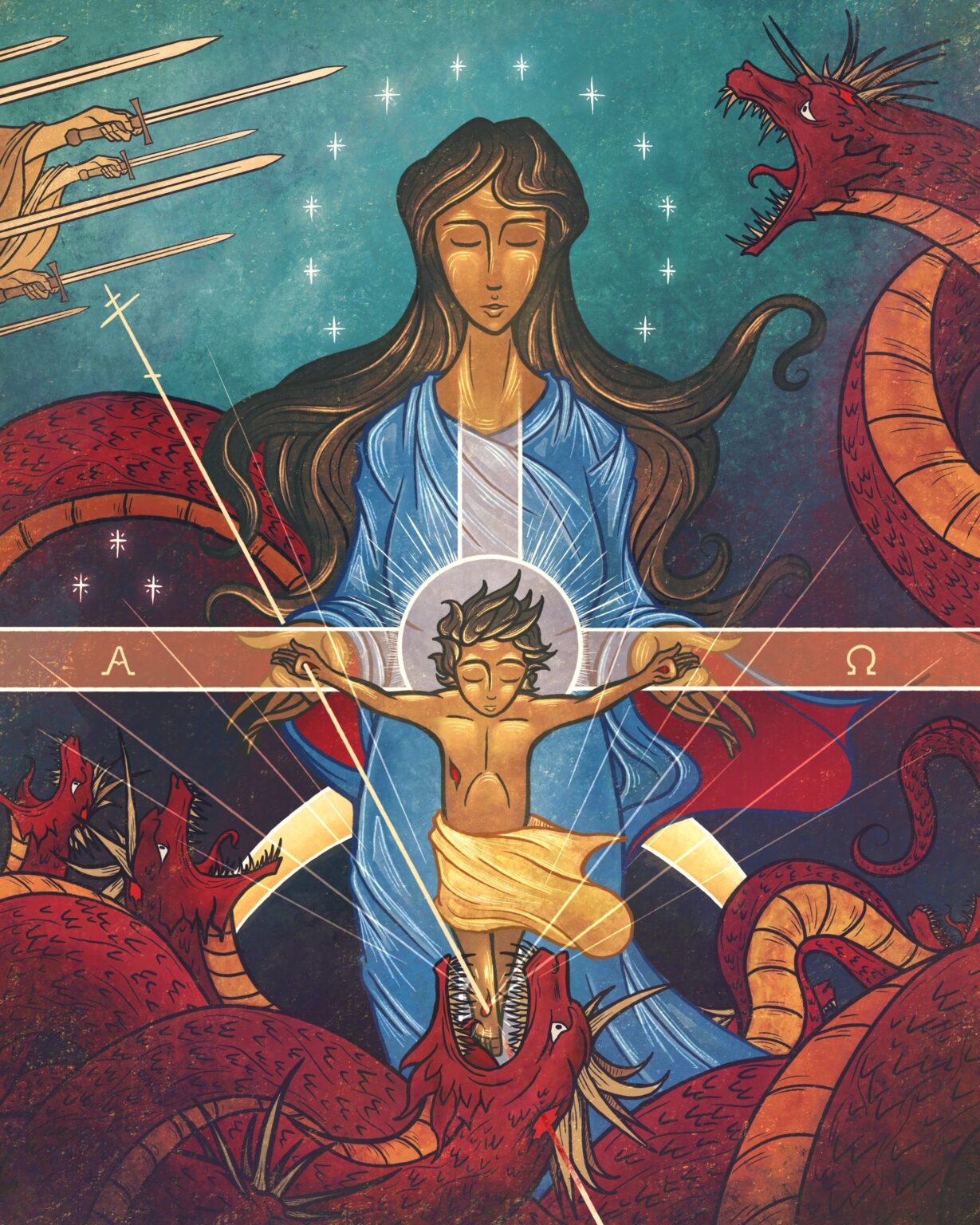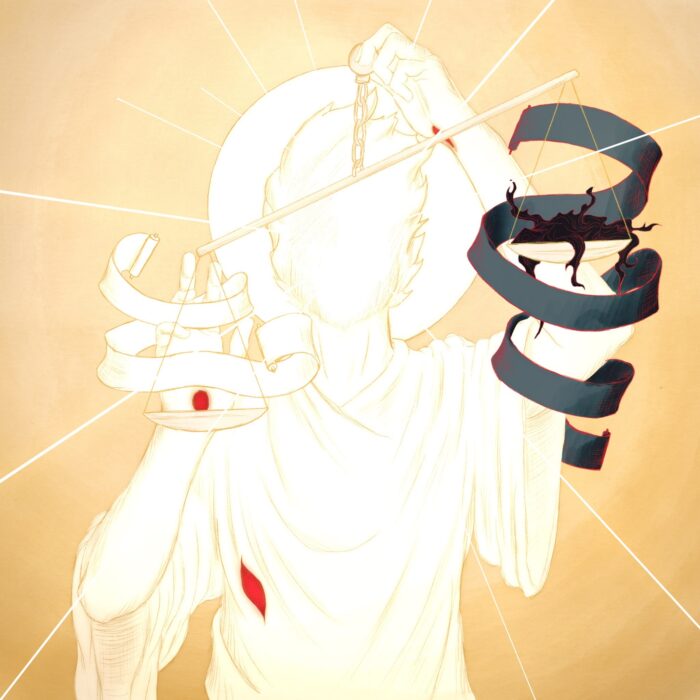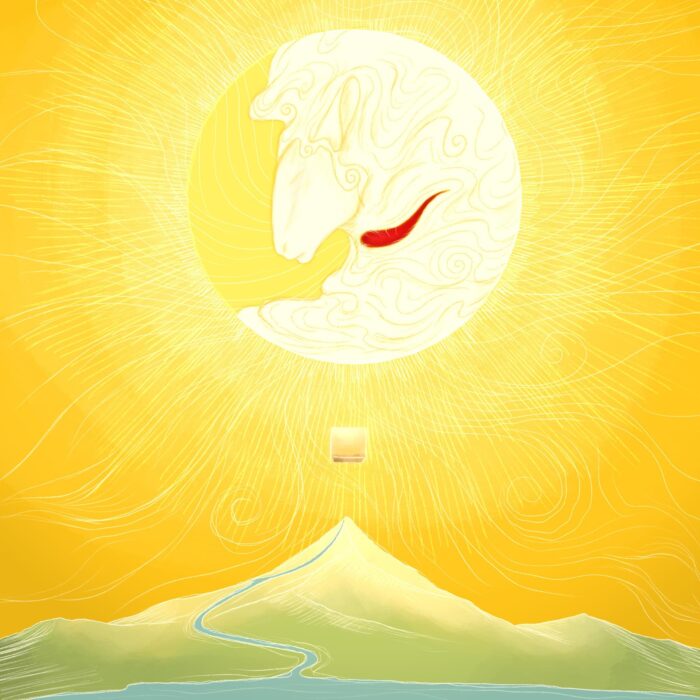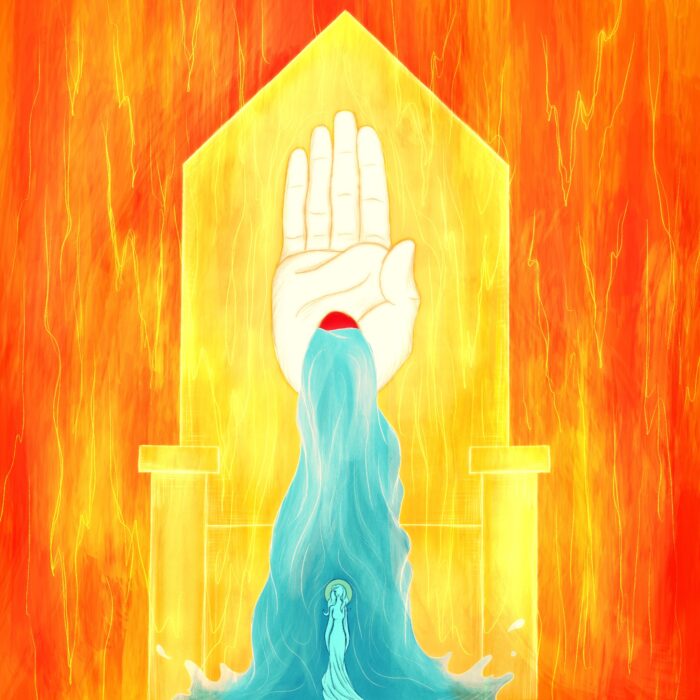Revelation 12:1-6
With one week left til Christmas, I wanted to share this year’s new Christmas picture; a visual exegesis of Christ’s birth as found in the book of Revelation…
At the literary center of John’s vision lies the ‘great sign’ of a celestial woman in the agonies of giving birth (v.1-2). A seven-headed dragon (‘that ancient serpent, who is called the devil and Satan,’ v.9) stands before her, ready to devour her child (v.3-4), however, the woman safely delivers her son who is ‘caught up to God and to His throne’ (v.5).
Scholarly discussion surrounds the identity of this woman (Israel? The Church? Mary?); I don’t intend to discuss that here (other than to suggest that these identifications need not be mutually exclusive). Rather, I want to consider what the ‘birth’ that John presents to us here is intended to convey. At first it might seem a fairly straightforward (if apocalyptic) depiction of Jesus birth in Bethlehem…But it is not so simple.
Firstly, when we consult John’s other book (his Gospel), we find that Jesus likens his crucifixion to a birth (Jn 16:20-22), and that, at Jesus’ elevation to the throne of the cross (the cross becomes a metaphorical throne in the symbolic imagery of the Gospel), Satan—the dragon—is decisively overcome (Jn 12:31). Additionally, the Greek John uses for the woman’s birth pangs in v.2 is unique and suggests great torment or agony.
These reasons and others have led some to suggest that the ‘birth’ of Rev 12:1-6 is, in fact, the resurrection-illumined *crucifixion* presented under the apocalyptic guise of a birth…From the vantage point of the resurrection, John perceives the crucifixion as the installation of the divine King upon the throne of the cosmos, as the decisive victory of God over the draconic power of Satan, and as the ‘birth’ of the true, Messianic Human Being, the beginning of redeemed humanity.
It is this birth—the birth of Calvary, rather than Bethlehem (though, it is a birth indivisibly tied to and is, in fact, the consummation of that prior birth)—it is this birth that John sees as a ‘great sign’ in heaven and places at the heart of his great apocalyptic book.
At the center of the image is the newborn Christ. The beams of glory shining from his halo form a cross upon which he is symbolically portrayed as crucified. This is an attempt to show that, for John, the ‘birth’ of Rev.12:1-6 is an apocalyptic depiction of the crucifixion (as that crucifixion finds authoritative interpretation in light of the resurrection); Jesus is ‘born’ as the divine ruler who is ‘caught up’ to the throne of God as He hangs before the eyes of faith on the resurrection-illumined cross.
The crucified / newly born Christ is pictured in the midst of his mother (Mary? Israel? The Church?). The placement pictures the slain and risen Jesus as both the ‘sun’ with which the Woman is clothed (12:1), and the one in whom the grievous pangs of His birth are supremely born—He bears the curse (Gen.3:16; Gal.3:13) in place of His people—even as He is the first born *from* those pangs so that all united to Him by faith might share in that same new—and true—birth.
At the base of the image, Satan—that ancient serpent—crushes Jesus’ heal, even as his own head (and, therefore, all seven of his heads) are crushed. The ‘protoevangelium’ (Gen. 3:15) finds fulfillment at the cross, which is the achievement of the promise made to Eve, and her salvation ‘through childbearing’ (1 Tim. 2:15). Ultimately, the Dragon is slain by the blood of the Lamb (Rev.12:11).
Other details are present, but the last I’ll mention here is that the entire image is backed by the crescent moon (Rev 12:1) which doubles as a picture of the opening tomb of Christ. This is intended to visually emphasize the crucial point that Jesus’ crucifixion becomes the enthronement of the Divine King, the birth of the Human Being, and the defeat of the Dragon *only* in light of the resurrection, *only* because the Crucified One is, now and forevermore, the Living One (Rev. 1:18). Hallowed be His Name, and Merry Christmas to you!




